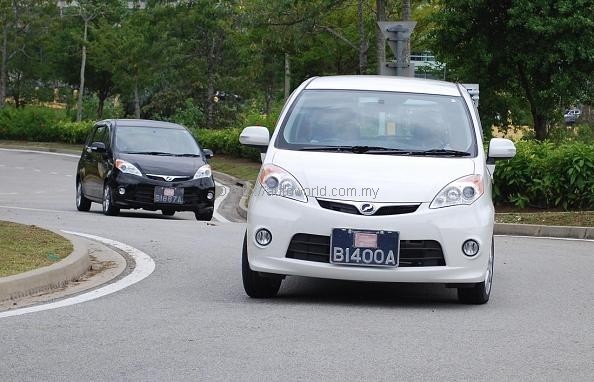A spin in the Perodua Alza
23 Nov 2009, 5:00pm – As your computer loads up this page, I’m currently at KLCC, witnessing the launch of new Perodua MPV, the Alza. If you’re reading this, chances are, you have been eagerly awaiting for the juicy details of P2’s latest baby. So, let’s cut to the chase.
Earlier this month, Perodua had already invited members of the Malaysian media for a brief spin in the Alza at Putrajaya. When I said brief, I meant it in the literal sense of the word, as what we got were pretty much quick runs around the block. Though to be fair, we were offered repeated goes, and the test route also included mild climbs, descents and sweeping curves.
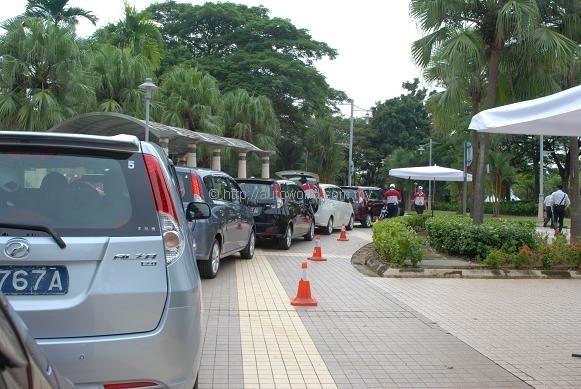 |
| Media Test Drive was held at Putrajaya on 5 Nov 2009 |
Prices & Variants
Most rumours on the internet place the Alza’s price in the range of RM55k – RM65k, which is about right. Relative to its size and engine capacity, this is a spot on pricing strategy from Perodua, making the Alza a logical step up from the Myvi.
Two variants are available at launch time, Standard and Premium, each with the option of automatic and manual transmission. A higher-end sportier version, in similar vein to the Myvi SE and Viva Elite is also available for booking, but deliveries will only commence in March 2010.
Prices start at RM55,490.00 (OTR with Insurance, Peninsula) for the Standard variant with manual transmission and solid paint, incrementally increasing to RM59,190.00 for automatic transmission and special metallic paint. Opting for the Premium versions adds RM5k to the price tag, bumping it to as high as RM64,190.00 for the auto version with the aforementioned special metallic paint. Differentiation between the two variants come in the form of fog lamps, rear spoiler, and interior features.
While accessories rarely play a part in our recommendations for cars in this market segment, safety features do. Your extra cash spent on the Premium versions also gets you a pair of airbags along with Anti-lock Braking System (ABS), Electronic Brake force Distribution (EBD), and Brake Assist (BA), all goodies not found in Standard trim.
There are no indications of the prices for the Sporty versions as of now, but we can expect this variant to be priced at about RM3k – 5k above the Premium. The unit we were shown at the media test drive came with a sporty bodykit, leather seats, and a Lokatoo GPS system with integrated reverse camera.
Aesthetics
At a glance, from front and back, the Alza’s family resemblance with the Myvi is obvious. When viewed from most angles, the Alza looks like fatter sibling of the Myvi though closer inspection reveals bolder styling cues. I heard a few remarks of it looking like a Myvi on steroids.
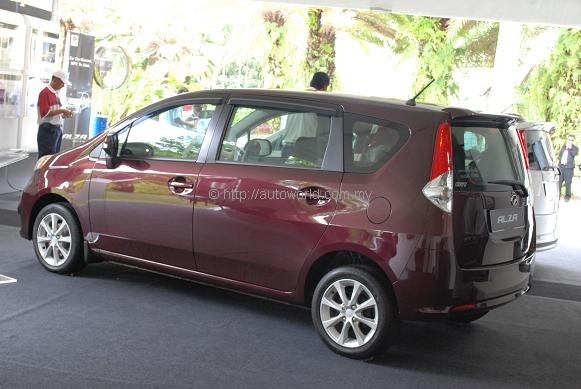 |
| Myvi on steroids?? |
Like all Perodua cars, its front fascia is styled to resemble a cheerful looking face. The strong upward curving line that visually separates the bumper from the grille and headlamps is shaped to look like a smile. This strong character line stretches all the way along the side profile before merging with the C-pillar. The swept-back headlamps rest on this prominent line, with a little ‘incisor tooth’ puncturing it just below the bulb of the first ever projector headlamp used in a national MPV. (ed: Any feature not found on the Exora can be rightly claimed as ‘first in a national MPV’.)
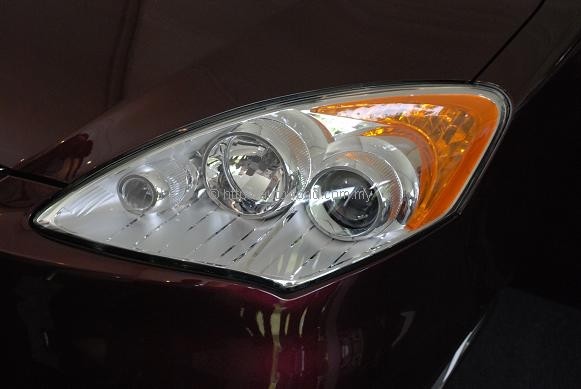 |
| Unusually bold headlamp design from P2 this time round. |
Family resemblance to the Myvi is then further emphasized with the front bumpers bulging sideways. The fog lamp slots are then placed wide to the side, highlighting the car’s visual width. One visual cue used for the first time in a Perodua are darkened window frames, applied to both variants of the Alza. Visually integrating the windows, it gives the Alza a touch of added class.
The Alza’s rear styling is simple and unassuming, though for reasons known only to themselves, Perodua has opted to place the bee-sting antenna of the Alza at the rear left corner of the roof rather than along the car’s centre-line. Like the Myvi and Viva, the Alza’s tail lamps run downwards along the C-pillar, being visually attached to the rear windscreen.
The Specs Sheet
In the best no-nonsense traditions of Perodua, the Alza is a mechanically simple vehicle. Powering it is the 1,495cc Toyota 3SZ-VE four-pot motor which has already seen action in Malaysia under the bonnets of the Perodua Nautica and Toyota Avanza. The 16-valve twin-cam engine with DVVT is of an undersquare (long stroke) design, with bore and stroke measuring at 72.0mm and 91.8mm respectively.
However, according to published figures, Perodua is quoting lower output levels for the Alza compared to the Nautica and Avanza. Where the latter two outputs 107hp @ 6,000rpm, the Alza makes do with 102 @ 6,000. Torque is similarly reduced, with the Alza twisting out 136Nm @ 4,400rpm, down from 141Nm at the same rpm.
Customers have a choice of sending power to the front wheels either using a 5-speed manual or a 4-speed automatic transmission. The rest of it – suspension (MacPherson / torsion beam), brakes (disc/drum), and steering (rack & pinion) – are similarly straight forward. At the four corners, 185/55 rubber are wrapped around 15″ alloys.
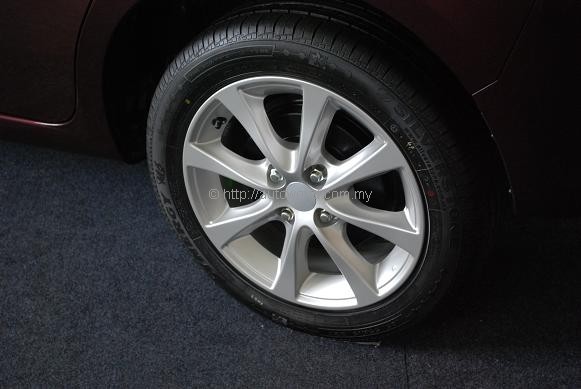 |
| 15-inch alloys standard |
Interior
While the Alza isn’t a technological marvel, the trump card of Perodua cars – with the notable and ironic exceptions of the Kembara and Nautica – have always been in their interiors, which pack generous volume in compact body shells.
Within exterior dimensions measuring at (length x width x height) 4,205mm x 1,695mm x 1,620mm, the cabin measurements are a generous 2,540mm x 1,415mm x 1,310mm. Seats can be configured to take up to seven passengers, with a cargo carrying capacity of 83 litres – this swells to a max of 884 litres in two passenger configuration.
Perodua is keen to stress that the Alza is not a 7-seater but rather a 5+2, with the rear seats expected to see only occasional use. The second row seats are designed to slide forward and back by 150mm, allowing the flexibility of either freeing up extra leg room for 2nd row passengers, or to better accommodate people in the third row. A noted journalist commented from his experience that the air-con was indeed powerful enough to send air blowing in his direction, though it was quite a squeeze for his modestly sized frame there.
Despite the big interior dimensions, Perodua saw it only necessary to place air-con blowers at the front console. Their reasoning is that they had already designed a more powerful air-conditioning system for the Alza, with the roof and seats designed to facilitate better air circulation all the way to the third row.
A notable feature when stepping into the Alza’s cabin is that the auto and manual versions feature slightly different centre consoles. Whereas the manual has a conventional floor-mounted shifter and handbrake, the auto gets a dash-mounted lever and a foot-operated parking brake.
Like the Myvi and the Viva, the Alza’s dash is simple and uncomplicated. It’s well-built and simple to use. Some obvious cost-cutting measures can be seen from the grade and quality of plastics used. One of the display cars was spotted with peeling paint in its steering wheel finishing. The panels appear tightly screwed together, so there should be little worry of things falling apart.
The instrument cluster is located at the centre with Optitron illumination. It houses analog speedo and tacho dials, with the fuel gauge integrated into the digital trip computer, which also calculates fuel consumption figures and available range. The increasingly neglected water temperature gauge is omitted, being replaced by temperature indicator lights – one of few criticisms in an otherwise faultless cabin.
In car entertainment is run by an integrated audio head unit channeling output through four door-mounted speakers. A single disc player with MP3 and WMA compatibility is standard, though Premium versions get USB & Bluetooth connectivity with steering mounted controls as well.
Behind the Wheel – Manual Version
Typical of any Perodua, getting the Alza moving is an easy and painless affair. The clutch is feather light, meaning those opting for stick shift should not need to worry about hernia. All round visibility is also good, as there are no noticeable blind spots, not at a glance anyway.
As you settle in to position, you should have ample head room, unless you’re Yao Ming, but if you’re Yao Ming, most cars won’t fit you anyway. The interior colour scheme and wide window area ensures that the cabin has a spacious and airy ambiance, though the fact that it actually IS spacious probably helped.
On the go, I was able to get the Alza up to speeds no more than 120-130kph at best before running out of road. At speed, with over 3,000rpm reading on the tacho, noise from the engine room is surprisingly well-muffled. Only when you send it towards the red-line that engine noise begins to permeate into the passenger cell. In any case, the engine sounds strained above 4,000rpm, so you’re unlikely to explore the upper limits of the rev range.
The engine may have been slightly de-tuned from the Nautica and Avanza, but it does not adversely affect the Alza even a bit. In fact, the power-to-weight ratio of the Alza is just right to ensure brisk acceleration. With four on board and air-conditioning at full blast, the manual Alza still pulls convincingly and responsively. Not enough to pin you to the back of your seats, but it doesn’t matter, and it’s all the better for it.
At the twisty bits, the Alza holds together well enough. Steering weight is unexpectedly good, as Perodua tends to give over-assisted steerings. Cornering is predictable, with minimal body roll felt over average speeds. For the first time in a Perodua car, the rear torsion beam is reinforced by a stabilizer bar, which explains why it seems to have improved handling over the Myvi.
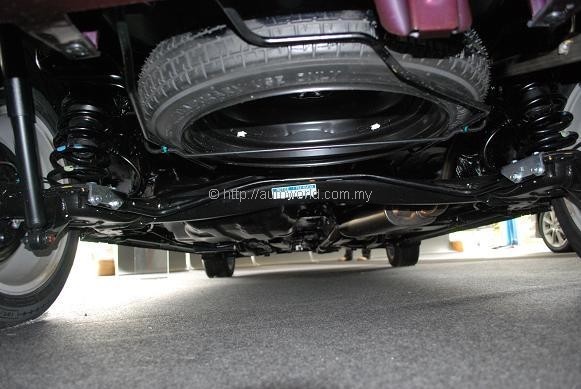 |
| Torsion beam rear suspension with stabilizer bar |
A usual bane of Perodua manual cars has always been rubbery and imprecise gear changes. This alone robs manual versions of the Myvi and Viva a lot of confidence and enjoyment out of the driving experience. The Alza is not exempt from this criticism, though it’s much improved. For a start, it slots into gear with better precision, though you still get the sensation that you’re loosely parking the gear stick into slot.
Another criticism, though probably not very fair in the case of a vehicle like the Alza, is that the brake and accelerator do not seem ideally positioned for heel-toeing when you downshift. It’s probably something that most buyers of the Alza will not be worried about, but just in case you’re bothered by these kind of things.
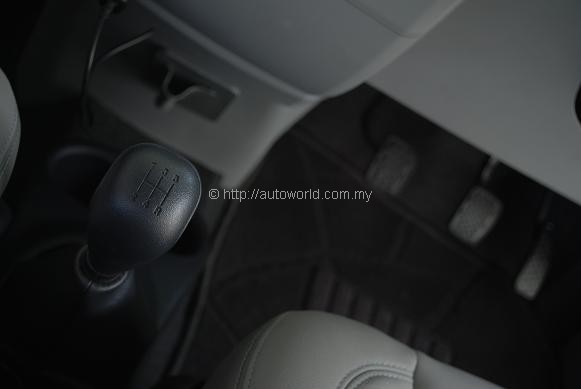 |
| Manual gear change is improved, but still not so good. |
Auto
Which is why, I’d recommend to you to go for the auto version if you’re in the market for an Alza. Though my preference has always been for manual transmission, the Alza is a kind of car best driven in ‘D’ and to cruise along relaxingly. Since I won’t be hammering it around trunk roads, I’d much rather save myself from the trouble of three-pedaled motoring here.
Other than a loose slotting gear lever, the auto Alza is pretty much a faultless car. Though four-speed auto transmissions are gradually becoming out of date, four gears are all the Alza needs. As far as auto transmissions go, the one in the Alza is as simple and as effective as it gets. It kicks down well on highways, but you’ll need to use manual overriding to ‘3’ or ‘2’ positions along trunk roads or up steep slopes.
You would also expect the auto version of the Alza to have compromised performance and fuel consumption compared to the manual, and you would be right. We don’t know about consumption yet, but in terms of performance, the difference is sufficiently minimal that it makes choosing the auto an easy decision.
 |
| Auto version is the recommended pick. |
What say us?
With the Alza, Perodua has delivered to the Malaysian public, a car that ticks all the right boxes. It’s not a particularly exciting car to look at or to drive, but that’s not to its detriment. Perodua’s hallmark has always been cars that are simple and easy to live with, and the Alza is no exception to that rule.
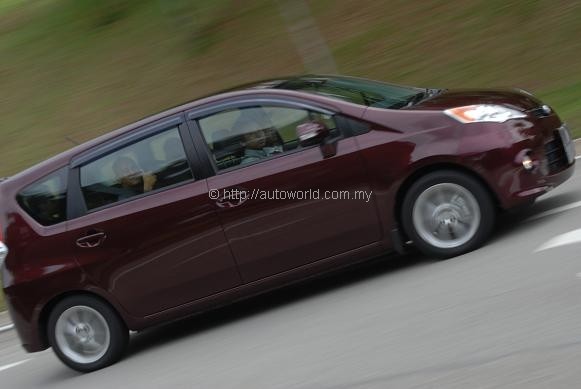 |
| Journo gives his thumbs up |
As a simple fuss-free mode of transport, the Alza is a spot on product for our market. No other product in our market offers a similar blend of space, economy, and with half-decent performance to boot. A full-on verdict is still pending a complete review, but there’s little to suggest that the Alza is anything other than a great buy. Just watch. This thing will fly off the showroom floors.
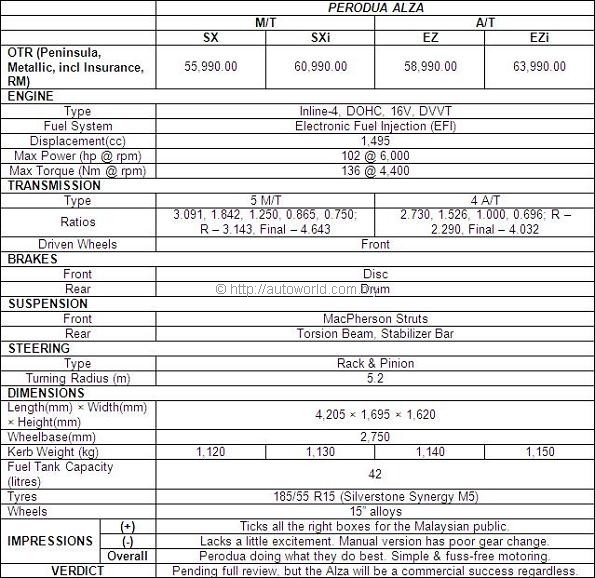 |




